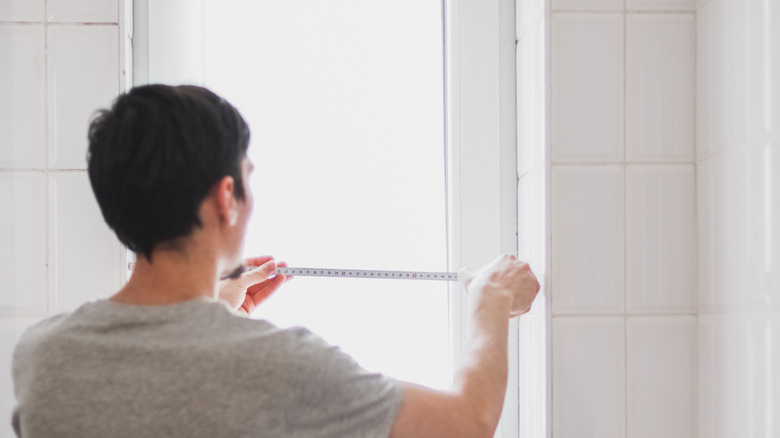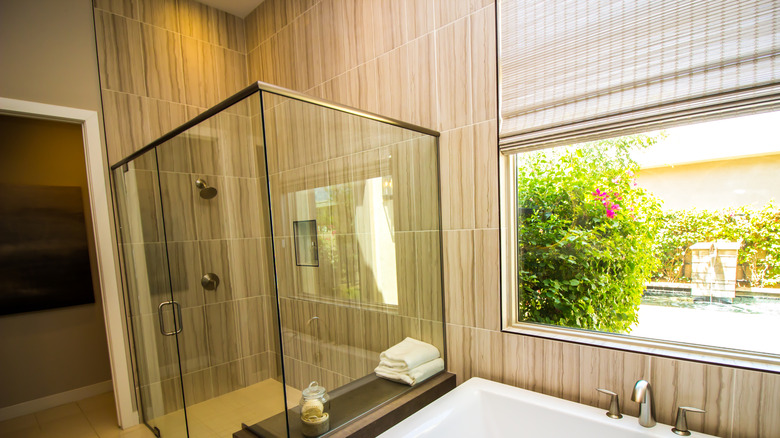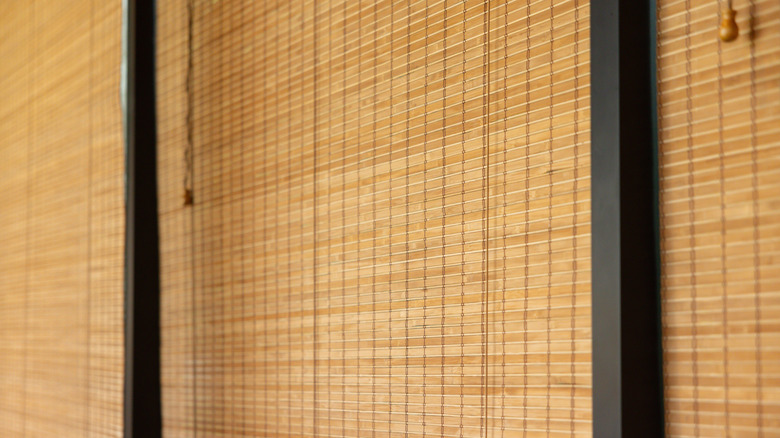The Layered Alternative To Bathroom Curtains May Be A Mold Problem Waiting To Happen
Finding the perfect window treatment for your bathroom can be a tough task. You need privacy, but you do not want to sacrifice your aesthetic. If you are tired of boring blinds or curtains and are looking for bathroom window treatment ideas that give a big boost of style as an alternative to curtains, then you might be interested in the trend of combining a fabric valance with a woven wood shade. This layered combination gives your bathroom windows more dimension, and it can have functional benefits as well. The woven wood shade gives you privacy with an organic, chic look, and the valance hides the hardware, leaving your bathroom feeling polished and put together. Whether you match the valance to the shade or create an interesting contrast, this window treatment will elevate your bathroom's style. However, as lovely as the idea may seem, there is a potential safety issue that may grow problematic over time if you decide to give this trend a try: mold.
Bathrooms get a lot of moisture from showers, baths, and even sinks, especially if you frequently use warm water for your hygiene needs. All of the moisture and the warmth create the ideal conditions for mold to grow, and it does not only grow near the water source or on a shower curtain liner. You may also find mold on your window treatment if you choose the wrong style or material for your bathroom. So, you might want to think twice before committing to the valance and woven wood shade combination, as this layering creates more warmth and potential mold growth.
Why you may want to avoid layers and woven wood shades in the bathroom
Windows and mirrors are also some of the most common places for water to build up in the bathroom, as the warm air containing water vapor contacts the cold glass surfaces and condensates into water droplets. Due to this moisture build-up, any window treatment you put in your bathroom may grow mold, though some materials and styles may be more likely than others. Woven wood shades are less durable than many other window treatment options in a bathroom. Wood shades are especially prone to damage from water, warping and even cracking in rooms like bathrooms that experience high moisture levels. The porous nature of wood also makes it a great place for mold to grow. Plus, layering a fabric valance might make the problem even worse.
The valance will cover part of the shade, potentially obstructing air circulation and reducing the ability of your bathroom ventilation to remove moisture from the shade. The level of obstruction will depend on the weight of the fabric, and picking the wrong fabric is a big mistake you may make when buying window treatments for a bathroom. For example, fabrics like nylon and polyester are not very breathable and could significantly prevent airflow, while fabrics like linen and voile are typically more breathable and would better allow airflow to the shade beneath. If you do want to try out a layered window treatment look in your bathroom, there are some preventative and cleaning steps you should know about.
What to do if you love this layered look
If you do decide to try out the look, one of the most important steps to prevent moldy window treatments is to ensure your bathroom has effective ventilation. Use a ventilation system with an exhaust fan or an extractor fan to ensure proper airflow, and look for a breathable fabric for your valance. If you notice moisture on your shades or valance after a warm shower or any other time, wiping them with a towel to dry them can also help prevent mold. Finally, make sure to include your window treatment in your regular cleaning routine. This can help remove any existing mold growth and prevent more growth in the future.
Alternatively, you can find woven shades in a faux wood material that is moisture-resistant and easy to care for and clean while still looking great. Bamboo can also grow mold, but finding a woven wood shade made of bamboo may be a slightly more water-resistant option if you really want a natural material. Finally, if you are determined to get this layered window treatment in your home, experiment with styling it in different, drier rooms of your house, such as a living room, dining room, or bedroom. If the potential for mold has scared you away from choosing this layered style, then you may be interested in learning some helpful tips for choosing the right window treatments to use in your bathroom so that you can make the right choice for your home.


